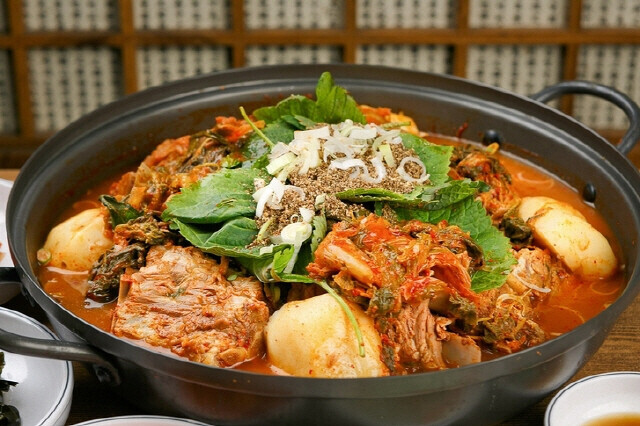
Gamjatang, a beloved Korean dish known for its hearty flavor and comforting warmth, has a history that is as intriguing as its taste. While its name directly translates to “potato soup,” the dish’s primary ingredient is actually pork spine.
A Misleading Name
The name “gamjatang” has led many to believe that potatoes are the star of this dish. However, the name is believed to have originated from the Korean word for the spinal marrow, which was once referred to as “gamja.” Over time, the dish became synonymous with the name, leading to the popular misconception about its main ingredient.
A History Rooted in Necessity
The origins of gamjatang can be traced back to a time when food was scarce. As pork was more readily available than other meats, it became a staple in many Korean households. To make the most of this ingredient, Koreans began cooking pork spine with various vegetables, including potatoes, to create a nourishing and filling meal.
How to Make Gamjatang
To make gamjatang, pork spine is typically boiled for an extended period to extract its rich flavor. Vegetables such as potatoes, sweet potatoes, and perilla leaves are then added to the broth. The dish is often seasoned with a blend of gochujang (Korean red pepper paste), soy sauce, garlic, and other spices.
A Modern-Day Favorite
Today, gamjatang is a popular dish enjoyed by people of all ages in Korea. It is often served in large, communal pots, making it a perfect dish for sharing with friends and family. While the exact recipe may vary from region to region, the core ingredients and cooking method remain largely the same.
A Global Culinary Delight
With its unique flavor profile and rich history, gamjatang has gained a following beyond Korea. Many Korean restaurants around the world now offer gamjatang on their menus, introducing this hearty stew to a global audience.
source : Global Economic Times(https://www.globaleconomictimes.kr)
[Copyright (c) Global Economic Times. All Rights Reserved.]





























